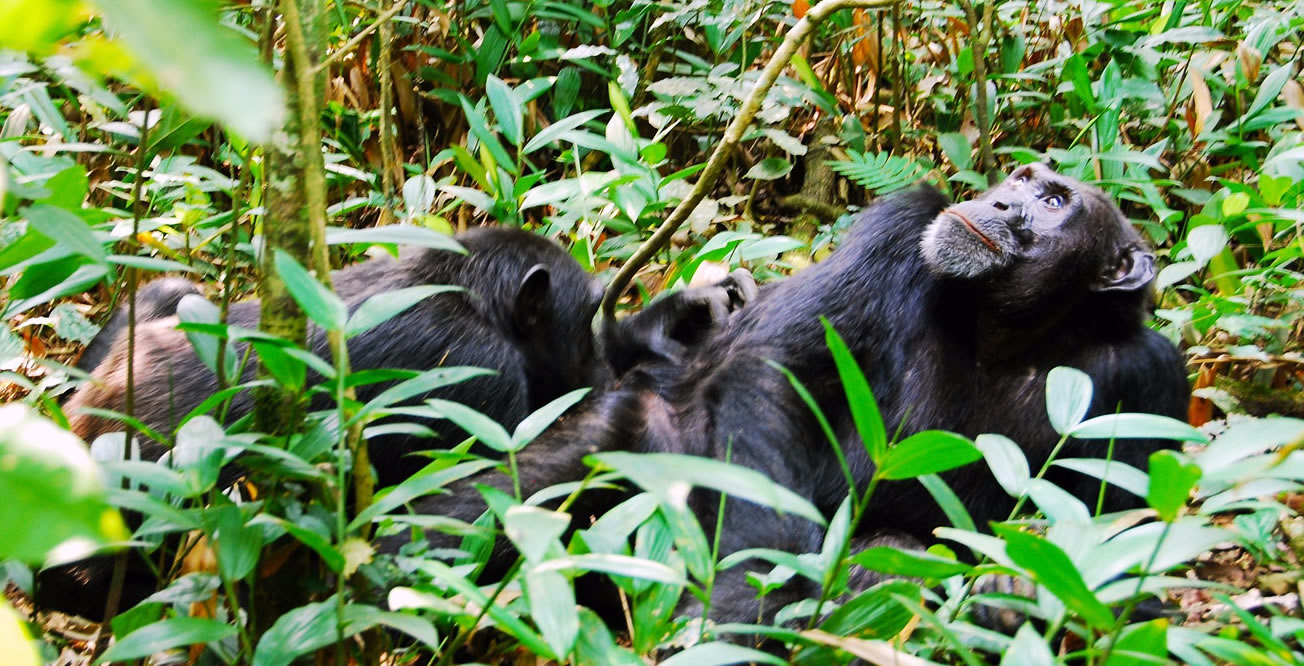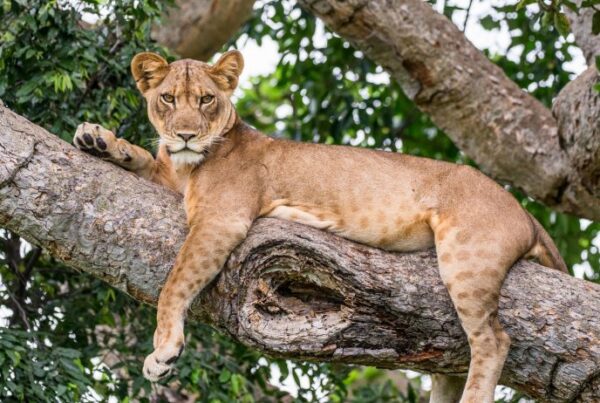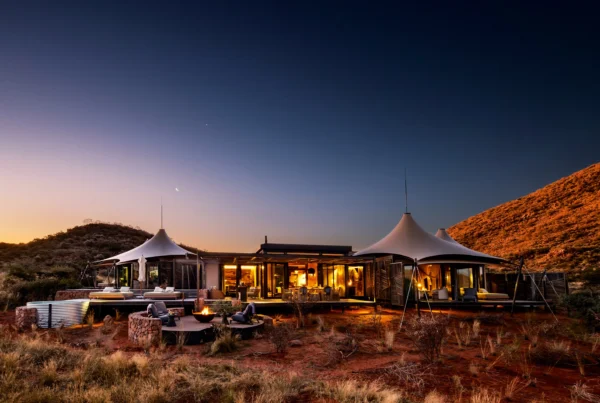Kibale vs Budongo: Which is Best for Chimp Tracking?
The Quest for Primate Encounters
In the heart of western Uganda, two of the nation’s most iconic forests—Kibale National Park and Budongo Forest Reserve—have established global reputations as premier destinations for chimpanzee tracking. Both sites offer visitors the unparalleled experience of observing wild chimpanzees in their natural habitat, yet they differ in ecological composition, habituation protocols, accessibility, and overall safari experience. The decision of which forest is “best” is influenced by a multitude of factors including wildlife density, biodiversity, terrain, infrastructure, seasonal patterns, and visitor expectations.
Chimpanzee tracking is more than a recreational activity; it is an immersive encounter with highly intelligent primates whose behavior, social structures, and ecological interactions provide profound insight into forest dynamics. Both Kibale and Budongo offer opportunities to observe these behaviors, yet the context and quality of the experience vary due to differences in forest ecology, habituation levels, and park management. Understanding these distinctions allows travelers to make informed choices, aligning their safari plans with personal preferences, logistical considerations, and conservation goals.
This guide provides an in-depth comparison of Kibale and Budongo forests, examining ecological features, chimpanzee populations, trekking logistics, wildlife diversity, seasonal influences, and visitor experience, with the objective of identifying which destination may be more suitable for different types of travelers.
Ecological Overview
Kibale National Park
Kibale National Park spans approximately 795 square kilometers and is characterized by tropical lowland rainforest, swamp forests, and rolling highlands. The forest canopy is dense and multi-layered, supporting a high diversity of primates, birds, and other wildlife. The presence of rivers and swamp areas creates microhabitats that sustain amphibians, reptiles, and aquatic species, enhancing overall biodiversity.
Kibale is home to over 1,500 chimpanzees, most of which are habituated for tourism and research purposes. The park is often referred to as the “primate capital of the world”, hosting 13 other primate species, including red-tailed monkeys, olive baboons, black-and-white colobus monkeys, and grey-cheeked mangabeys. This high species richness provides a dynamic safari experience, where chimpanzee tracking is complemented by observation of a wide array of forest wildlife.
Budongo Forest Reserve
Budongo Forest Reserve, located approximately 40 kilometers north of Murchison Falls National Park, covers about 825 square kilometers. Unlike Kibale, Budongo is primarily semi-deciduous tropical rainforest, with extensive areas of mixed forest, bamboo zones, and riverine corridors. Its ecology is particularly suited to supporting large primate populations, including chimpanzees, as well as a variety of bird and mammal species.
Budongo is renowned for its Budongo Forest Project, which has contributed significantly to the habituation and conservation of chimpanzee communities. The forest supports multiple habituated chimpanzee groups available for tracking, though in slightly lower numbers compared to Kibale. Budongo is also noted for its butterfly diversity, birdlife, and dense forest cover, which offer visitors opportunities for ecological observation beyond chimpanzee tracking.
Chimpanzee Populations and Habituation
Kibale’s Chimpanzees
Chimpanzees in Kibale are highly habituated to human presence due to long-term research and tourism programs. Habituated groups allow visitors to approach primates at relatively close distances, observing detailed social interactions, grooming behaviors, nest building, and foraging patterns. The habituation process is conducted under strict protocols to minimize stress on the animals while maximizing observation opportunities.
Multiple groups are available for trekking, with rangers and guides providing expert interpretation of chimpanzee behavior, group dynamics, and ecological context. Chimpanzee activity is most observable in early mornings when feeding and social interactions peak. Trekking durations typically range from 2 to 6 hours, depending on group movements and trail conditions.
Budongo’s Chimpanzees
Budongo Forest hosts several habituated chimpanzee communities, though habituation is more limited compared to Kibale. The Sonso and Waibira communities are the most commonly visited by tourists, with tracking conducted under strict ecological protocols. Budongo chimpanzees tend to be more elusive and mobile, reflecting the slightly less intensive habituation programs.
Tracking in Budongo offers a more “wild” experience, with sightings that can feel unpredictable and immersive. While this may reduce the guarantee of close encounters, it provides opportunities to observe chimpanzees engaging in more natural foraging and ranging behaviors, offering a perspective that emphasizes ecological authenticity.
Trekking Experience and Accessibility
Kibale Trekking
Chimpanzee trekking in Kibale is supported by well-developed infrastructure. Trails are maintained, ranger teams are experienced, and lodge accommodations are situated near trekking starting points. Early morning departures are facilitated by proximity to lodges, ensuring that visitors reach chimpanzee habitats during peak activity. Accessibility from Fort Portal is convenient, with roads generally navigable year-round, though wet season conditions can slow travel.
The trekking experience is structured and guided, ensuring that ethical protocols are followed while optimizing observation opportunities. Secondary trails, canopy platforms, and optional nature walks complement the core trekking experience, allowing visitors to observe additional primates, birds, and forest ecology.
Budongo Trekking
Budongo trekking is slightly more rustic, with forest trails that are less developed and occasionally challenging to navigate, particularly during the wet season. Access is generally via Masindi or Murchison Falls, and transportation to the forest can take longer, requiring careful planning.
The trekking experience emphasizes authenticity and immersion, with visitors often observing chimpanzees in less disturbed areas. While the unpredictability of sightings may appeal to more adventurous travelers, the relative difficulty of access and trail navigation requires greater physical preparedness and flexibility. Guides provide ecological interpretation, but the experience may be less structured compared to Kibale.
Biodiversity Beyond Chimpanzees
Kibale’s Complementary Wildlife
Kibale offers diverse wildlife viewing opportunities, including red-tailed monkeys, black-and-white colobus monkeys, olive baboons, and L’Hoest’s monkeys. Birdwatching is exceptional, with over 370 species, including turacos, hornbills, and sunbirds. Terrestrial mammals such as bushbucks, duikers, and giant forest hogs can be encountered, while reptiles, amphibians, and insects contribute to ecological richness.
Secondary forest trails and swamp areas provide observation points for multiple species, creating a layered safari experience where chimpanzee tracking is complemented by broader biodiversity encounters.
Budongo’s Complementary Wildlife
Budongo Forest is also rich in primate diversity, hosting red-tailed monkeys, black-and-white colobus monkeys, and grey-cheeked mangabeys. Avian diversity is high, particularly in the semi-deciduous zones, with specialized species such as the blue-headed bee-eater and Ross’s turaco. Budongo’s butterfly populations and understory mammals provide additional ecological interest.
While the chimpanzee-centered experience is slightly more challenging, the forest offers opportunities for scientific observation and ecological study, appealing to researchers and eco-tourists seeking in-depth engagement with natural systems.
Seasonal Influences on Chimp Tracking
Wet Season Effects
During the wet seasons from March to May and September to November, both forests experience heavy rainfall, resulting in slippery trails, swollen rivers, and denser vegetation. In Kibale, treks may be more physically demanding, though wildlife activity, including chimpanzee foraging and bird abundance, is heightened. Budongo trails become more challenging during the same period, and sightings may require additional patience due to dispersed chimpanzee movement.
Wet season visits provide lush scenery, increased biodiversity observation, and quieter trails, as tourist numbers are lower. Photographers often favor this period for the vibrant forest landscapes and active wildlife displays.
Dry Season Effects
Dry periods from December to February and June to August facilitate easier trekking, accessible trails, and higher predictability of chimpanzee sightings. Kibale treks are smoother, allowing extended observation windows, while Budongo provides slightly more challenging but still navigable conditions. Dry seasons attract higher visitor numbers, emphasizing the importance of early bookings to secure permits and lodge accommodations.
Visitor Experience and Preferences
Kibale Advantages
Kibale is preferred by travelers seeking structured, accessible, and highly reliable chimpanzee trekking experiences. The high degree of habituation, well-maintained trails, nearby lodges, and additional primate and bird diversity create a comprehensive safari package. For first-time visitors, families, and those seeking convenience without compromising wildlife observation quality, Kibale is often the optimal choice.
Budongo Advantages
Budongo is favored by those seeking a more adventurous and immersive forest experience. The forest’s slightly less habituated chimpanzee populations, denser trails, and ecological authenticity appeal to seasoned wildlife enthusiasts, researchers, and travelers who value unpredictability and depth of engagement. Budongo emphasizes ecological integrity and offers opportunities to witness chimpanzees exhibiting natural behaviors with minimal human disturbance.
Conservation and Ethical Considerations
Both Kibale and Budongo operate within frameworks of ethical tourism and conservation management. Permits for chimpanzee trekking regulate visitor numbers, ensure minimal impact on wildlife, and support research and habitat protection. Lodges and guides in both forests integrate educational initiatives, highlighting ecological dynamics, primate behavior, and community-based conservation programs.
Revenue generated from tourism contributes to forest protection, anti-poaching initiatives, and local livelihoods. Choosing between Kibale and Budongo can also reflect conservation priorities, with travelers weighing convenience and habituation against wilderness authenticity and ecological immersion.
Choosing the Optimal Destination
The choice between Kibale and Budongo for chimpanzee tracking depends on visitor preferences, experience level, and desired balance between accessibility and immersion. Kibale is ideal for those seeking highly habituated chimpanzees, structured trekking, lodge proximity, and broader wildlife diversity in a comfortable setting. Budongo appeals to travelers pursuing adventurous, less predictable encounters, with opportunities to observe chimpanzees in more natural and minimally disturbed environments.
For travelers seeking a comprehensive and expertly guided experience, it is recommended that tours, trekking permits, and accommodations be arranged through WildHorn Africa. Their expertise ensures access to prime chimpanzee observation sites, knowledgeable guides, sustainable practices, and high-quality logistical support, transforming a visit to either Kibale or Budongo into an unforgettable journey into Uganda’s primate-rich forests.




 WildHorn Africa – Authentic and unforgettable tours across Africa, guided by local experts who know the land, wildlife, and culture best.
WildHorn Africa – Authentic and unforgettable tours across Africa, guided by local experts who know the land, wildlife, and culture best.


